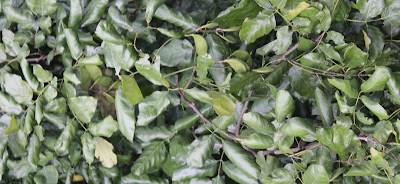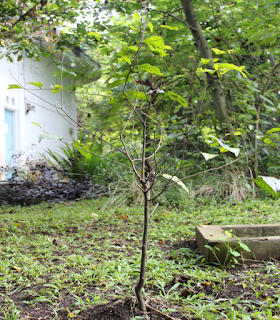Pongamia pinnata L.
Pongamia pinnata Leaves
(Hidayat & Abdurrahman, 2017)
Pongamia pinnata Pod
(Hidayat & Abdurrahman, 2017)
Pongamia pinnata Seed
(Hidayat & Abdurrahman, 2017)
Regnum : Plantae – Plants
Subregnum : Tracheobionta – Vascular plants
Divisio : Magnoliophyta – Flowering plants
Classis : Magnoliopsida – Dicotyledons
Subclassis : Rosidae
Ordo : Fabales
Familia : Fabaceae – Pea family
Genus :
Species : Pongamia pinnata L.
Description
Description
Pongamia pinnata is a medium-sized evergreen or briefly deciduous,
glabrous shrub or tree 15-25 m high, with straight or crooked trunk 50-80
cm or more in diameter and broad crown of spreading or drooping
branches. Bark grey-brown, smooth or faintly vertically fissured.
Branchlets hairless with pale stipule scars (Orwa et al.2009). Pongamia pinnata can growth in altitude: 0-1 200 m, mean annual temperature: 1-16 to 27-38(50) deg. C, mean annual rainfall: 500-2 500 mm.
Leaves alternate, imparipinnate with long slender leafstalk, hairless,
pinkish-red when young, glossy dark green above and dull green with
prominent veins beneath when mature. Leaflets 5-9, paired except at end,
short-stalked, ovate elliptical or oblong, 5-25 x 2.5-15 cm, obtuseacuminate at apex, rounded to cuneate at base, not toothed at the edges,
slightly thickened (Orwa et al.2009).
Inflorescence raceme-like, axillary, 6-27 cm long, bearing pairs of strongly
fragrant flowers; calyx campanulate, 4-5 mm long, truncate, finely
pubescent. Flower clusters at base of and shorter than leaves, to 15 cm
long, slender, drooping. Flowers 2-4 together, short-stalked, pea-shaped,
15-18 mm long. Calyx campanulate, 4-5 mm long, truncate, finely
pubescent; corolla white to pink, purple inside, brownish veined outside, 5-
toothed, standard rounded obovate 1-2 cm long, with basal auricles, often
with green central blotch and thin silky hairs on back; wings oblong,
oblique, slightly adherent to obtuse keel (Orwa et al.2009).
Pods borne in quantities, smooth, oblique oblong to ellipsoid, 3-8 x 2-3.5 x
1-1.5 cm, flattened but slightly swollen, slightly curved with short, curved
point (beaked), brown, thick-walled, thick leathery to subwoody, hard,
indehiscent, 1-2 seeded, short stalked. Seed compressed ovoid or
elliptical, bean-like, 1.5-2.5 x 1.2-2 x 0.8 cm, with a brittle coat long,
flattened, dark brown, oily (Orwa et al.2009).
This species has been placed alone in its genus Pongamia, derived from
the Malabar local name (pongam). In 1972, S. R. Bennet, an Indian
taxonomist gave the pongam a new name, Derris indica (Lamk.) Bennet,
but this change has not been generally adopted. The name Derris, derived
from Greek, means ‘leather covering or skin’; the specific name ‘indica’
obviously means of India (Orwa et al.2009).
The leave extrac oil could be use as natural soap, sometime the leave use as forage but not common because the chemical substance. The bark fibre is made into string, twine or rope, and the wood provides paper pulp. In India, the tree is a host for the useful insect, nodulation is reported on pongam. In nurseries and fields the presence of nodules on uninoculated
pongam seedlings is common. Therefore, this species may not be specific in its Rhizobium strain requirement. It
nodulates and fixes atmospheric nitrogen with Rhizobium of the cowpea group
Location : Zone 2 UPI Botanical Garden
Please cite this article as:
Azis, A. M. (2019). UPI Seed Plants: Pongamia pinnata L. Online at
https://upiseedplants-one-aldi.blogspot.com/. Accessed (Date)
Please cite this article as:
Azis, A. M. (2019). UPI Seed Plants: Pongamia pinnata L. Online at
https://upiseedplants-one-aldi.blogspot.com/. Accessed (Date)






Comments
Post a Comment